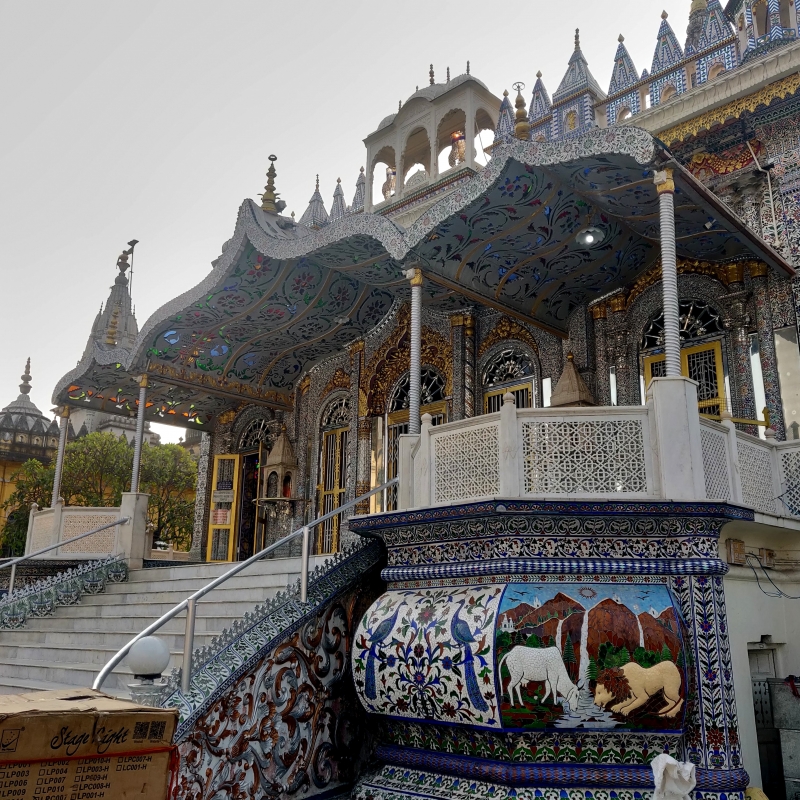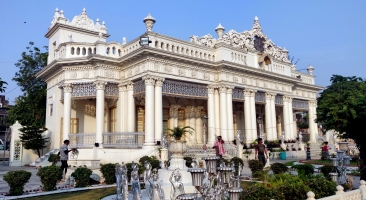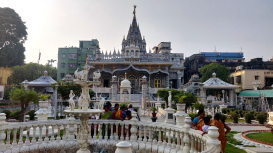Calcutta (now Kolkata), ever since its inception in 1690, has attracted seekers of fortune. By the late eighteenth century, it had become a thriving trade centre of the British Empire, inviting people from different regions, religions, communities and ethnicities to come and be a part of the city’s social and cultural fabric. The effects of this multicultural confluence were most perceptible in art and literature. The architecture of this period display a predominantly European influence combined with regional sensibilities.
A prime example of this exchange between European and Indian visual languages is the Swetamabara Jain temple cluster, built over the second half of the nineteenth century at the Manicktala area in Kolkata. It was founded by Jain families, known as the Johari Sath community, who migrated to Kolkata in the mid-nineteenth century. Following the politics of the times and the people who built them, the temples of this cluster show an amalgamation of traditional Jain architecture with British design idioms of the times.



